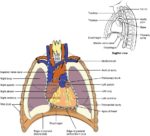The human skeleton, an intricate internal framework, provides essential support, protection, and mobility for our bodies. Comprising numerous individual bones and cartilages, it forms the architectural basis upon which our muscles, organs, and other soft tissues rely. the human skeleton, exploring its structure, functions, and significance.
## Anatomy of the Human Skeleton
1. Axial Skeleton:
– The vertebral column, commonly known as the spine, constitutes the central axis of the axial skeleton. It serves as the primary support for the trunk and head.
– Much of the skull also falls within the axial skeleton. The skull houses the brain, sensory organs (such as the eyes and ears), and the intricate network of cranial nerves.
– Additionally, the visceral subdivisionwhich includes the lower jaw, parts of the upper jaw, and the branchial arches (including the hyoid bone)is part of the axial skeleton.
2. Appendicular Skeleton:
– The appendicular skeleton encompasses the bones and cartilages of the limbs, as well as the pectoral (shoulder) girdle and the pelvic (hip) girdle.
– It facilitates movement, allowing us to walk, run, grasp objects, and perform various activities.
## Functions of the Skeleton
1. Support:
– The skeleton provides a sturdy framework that maintains the body’s shape and prevents it from collapsing under its own weight.
– The vertebral column, akin to the notochord in lower organisms, plays a crucial role in supporting the trunk.
2. Protection:
– Bones shield vital organs from external forces. For instance:
– The skull protects the brain.
– The rib cage safeguards the heart and lungs.
– The vertebral column shields the spinal cord.
3. Motion:
– The appendicular skeleton enables movement by serving as attachment points for muscles.
– Jointswhere bones meetallow for flexibility and coordinated motion.
– Muscles pull on bones, creating the mechanical force necessary for locomotion.
## Notable Bones and Their Functions
1. Femur:
– The thigh bone is the longest and strongest bone in the human body.
– It supports body weight during standing, walking, and running.
2. Scapula (Shoulder Blade):
– The scapula anchors muscles that move the arm and shoulder.
– It provides stability for arm movements.
3. Humerus:
– The upper arm bone connects the shoulder to the elbow.
– It allows for arm flexion, extension, and rotation.
4. Radius and Ulna:
– These forearm bones enable wrist rotation and hand movements.
– The radius is on the thumb side, while the ulna is on the pinky side.
5. Tibia and Fibula:
– The shinbones form the lower leg.
– The tibia bears most of the body weight during standing.
6. Pelvic Bones:
– The pelvis consists of the ilium, ischium, and pubis.
– It supports the abdominal organs and provides attachment for leg muscles.
## Labeling the Skeleton
– To understand the human skeleton better, consider using labeled diagrams and interactive resources.
– These resources help identify individual bones, their locations, and their relationships to other structures.
– Whether in the classroom or as a fun activity at home, exploring the science of the human body through skeletal labeling enhances our appreciation for this remarkable framework.
In summary, the human skeletoncomposed of bones, cartilages, ligaments, and tendonsserves as an intricate scaffold. It not only supports our bodies but also ensures our survival, allowing us to move, protect our vital organs, and thrive in our dynamic world..



